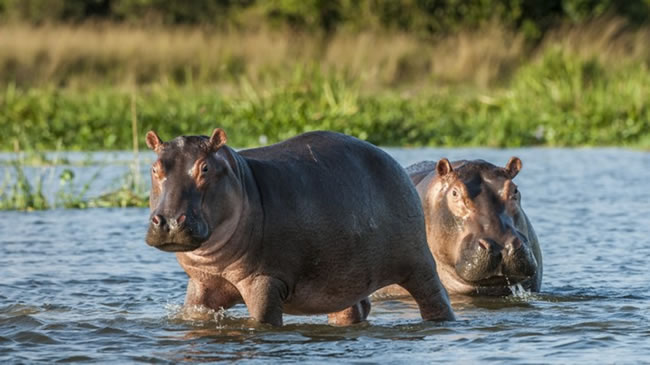Arusha National Park, located northeast of Arusha, is the most accessible national park on Tanzania's…

Lake Manyara National Park
Lake Manyara National Park provides a wilderness experience in a variety of environments, including the Rift Valley soda lake, dense woods, and high mountainsides. Aside from its stunning scenery, the park is well-known for its unique tree-climbing lions and the large elephant herds it was designed to conserve.
The 11 ecosystems range from savannah to marshland to Tanzania’s sole evergreen rainforest. Baboons and other interesting animals can be seen in the forest, while flamingos, pelicans, and other water birds can be found around the lake (outside of the rainy season). Birders adore Lake Manyara National Park because it provides opportunity to observe approximately 300 migrating birds in total. Among these are the long-crested eagle, the grey-headed kingfisher, and other species unique to Tanzania. The park has one of the highest biomass densities for large mammals in the world. The high probability of seeing elephant families wandering through the forest, as well as Lake Manyara’s famous population of tree-climbing lions, are compelling reasons to add a visit to this park on your schedule.
Game drives in Lake Manyara National Park.
How about exploring the park’s different habitats? For bird lovers, stop along the shoreline to see the various bird species and look for pink flamingos. During your game drive, you’ll explore acacia woodlands, grassy floodplains, and tall forest in search of wildlife, including Manyara’s famous tree-climbing lions, which can be seen resting on tree brunches.
An Olive baboon group of 200 people is usually up for a good time, and dark male giraffes may be seen staring over the rooftops of green trees. A subspecies of the common wildebeest frolics on the lakeshore, while gigantic buffalo males with spectacular horns enjoy the seeping muddy shallows. The elusive leopard and the Cape clawless otter are occasionally seen.
Lake Manyara National Park, one of Tanzania’s lesser wilderness enclaves, with spectacular terrain. A unique place in which to connect with nature and truly appreciate and gasp at the extraordinary world of wildlife.
The gorgeous Lake Manyara covers two-thirds of the park in liquid depths, while the rest of the Manyara environment is made up of steep hills, flourishing marshlands, dense woods, wide grasslands, and hot springs.
Treetop Walkway
The park contains Tanzania’s first suspended walkway. The walkway is high amid the trees, reaching more than 18 meters above ground in certain spots. This makes it one of the best sites to see unusual birds, mammals like blue monkeys, and huge baboons in their native environment.
The walkway is accessible from near the park’s entrance gates and can be visited at any time of day (6:00 a.m.–6:00 p.m.). The walkway is approximately 370 meters long, therefore it may take 30-60 minutes to finish the entire safari. From the promenade, you may also see elephants, buffaloes, and antelopes.
Forest hikes
The park not only allows you to stroll through the deep trees, but also to wander along Lake Manyara’s shoreline. You can choose from any of the courses, which span 2-3 hours and target different places and species.

Lake Shore Trail
This trek begins at the Hot Springs (about 38 kilometres from the entrance) and proceeds through savannah and acacia trees. This walk allows you to see flamingos and wildlife like zebras, bushbucks, gazelles, giraffes, and elephants.
A Walk Near the Shores
You may even choose for a modest walking safari around Lake Manyara’s shoreline. Flamingos, storks, herons, and pelicans are among the waterbirds seen here.
Although you may visit the park all year, you should go during the wet season (November to June) for the best bird watching, or from July to October to see the larger creatures.



